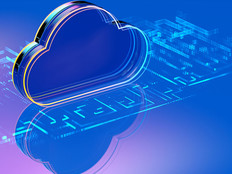Q&A: AnyPresence's Rich Mendis Talks IoT
AnyPresence co-founder Rich Mendis recently answered some questions from FedTech managing editor David Stegon about the evolution of the Internet of Things (IoT).
FEDTECH: How have federal agencies done in implementing the Internet of Things (IoT) solutions? What have been their biggest challenges?
MENDIS: According to the Brookings Institution, the federal government is largely missing or ignoring the value and potential of the Internet of Things. In their research as of March 2015, Brookings found that IoT was not mentioned in a single federal plan. The challenge is likely related to the perceived or real complexities involved with building IoT applications.
FEDTECH: How can mobile back end services help this adoption?
MENDIS: During the last few years, mobile developers started to exploit cloud capabilities through a niche service model that is often referred to as Mobile Backend as a Service (MBaaS), or, more generically, Mobile Infrastructure Services. This new delivery model empowered developers by enabling them to deliver richer functionality and great user experience without having to spend valuable time and resources developing back end server infrastructure and plumbing.
With IoT becoming mainstream, the mobile developer community is gearing up to deliver solutions involving a new breed of devices, services and data source endpoints. Given the similarities between mobile applications and IoT solutions, they can leverage many of their existing skills. Mature MBaaS platforms such as AnyPresence have already augmented their platform to support IoT use cases and scenarios, making the transition from mobile application development to IoT development seamless.
FEDTECH: What are the necessary features of mobile back end solutions that can help federal mobilize and capitalize on IoT?
MENDIS: The following are key features of mobile back end services that can help federal mobilize and capitalize on IoT technology:
Authentication: The back end server validates that the IoT device is authorized and authenticated to send and receive data. It also authenticates users interacting with the back end platform and the devices.
Data storage: The storage layer is used for storing both the metadata and data related to sensors and devices. This layer also contains the transformed and processed data after being manipulated by any custom business logic.
Business logic: Each message sent by the sensors will get processed and orchestrated by the business-logic layer. The code containing the business logic is typically implemented as microservices, where each module is autonomous and self-contained, with clearly defined context boundaries. With the growing popularity of JavaScript, many of the platform providers host node.js for running the server-side business logic.
Events: The business-logic layer might trigger events that need to be processed further. Long-running or asynchronous tasks might raise an event when they are complete, and, similarly, an event might be raised when a data point is above a defined threshold. For example, when the temperature sensor’s data crosses a specific value, the developer will wire up the event with the code to turn on an air conditioner and send a push notification to the user’s mobile phone about the operation.
Extensibility and integration: The platform further adds an extensibility layer for integrating with third-party cloud services, enterprise systems (CRM, ERP), databases, Big Data processing, advanced monitoring and analytics.
FEDTECH What federal agencies are doing it best, and why?
MENDIS: One initiative that held promise was the National Institute of Standards and Technology (NIST) program called the SmartAmerica Challenge. This program aimed to accelerate advances in the field of IoT, sometimes referred to as cyber-physical systems (CPS), by providing a venue for innovators to present concepts for interconnected CPS technology, programs and test beds to demonstrate the potential of improving the economy, fueling job creation, creating new business opportunities and saving lives.
A kickoff of the program was held in December 2013, and more than 65 participants formed teams to identify ways to collaborate and push the technology forward. In June 2014, 24 teams with over 100 organizations came together at the Walter E. Washington Convention Center for a demonstration, which included keynotes by senior government leaders, including U.S. Chief Technology Officer Todd Park and General Services Administrator Dan Tangherlini.
This program was important in that it encouraged innovation from across different groups, which is sorely needed. Alas, despite much coverage, the website for SmartAmerica Challenge no longer seems to be functioning, symbolizing, perhaps, the current state of IoT affairs in the federal sector.







